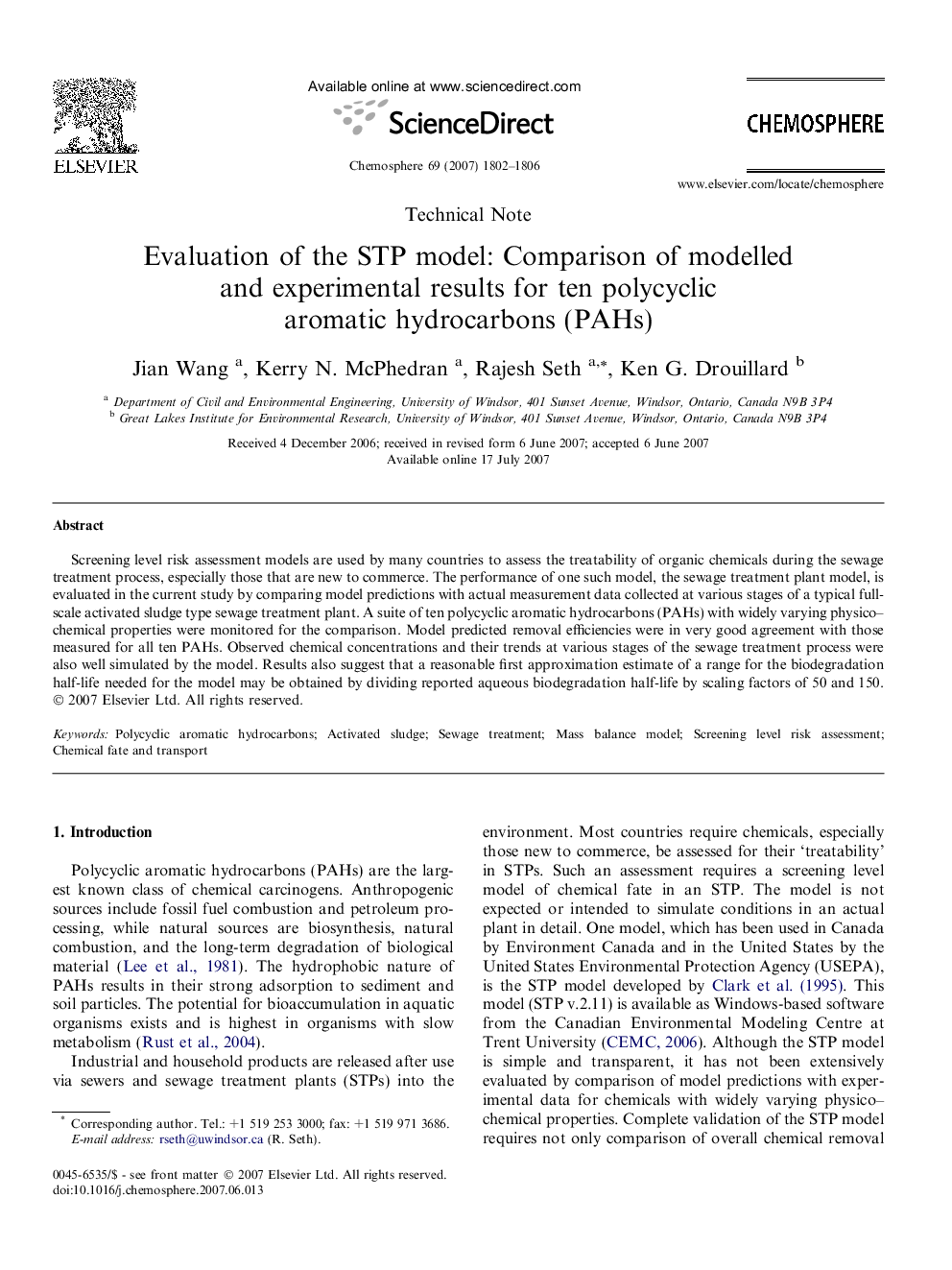| Article ID | Journal | Published Year | Pages | File Type |
|---|---|---|---|---|
| 4415001 | Chemosphere | 2007 | 5 Pages |
Screening level risk assessment models are used by many countries to assess the treatability of organic chemicals during the sewage treatment process, especially those that are new to commerce. The performance of one such model, the sewage treatment plant model, is evaluated in the current study by comparing model predictions with actual measurement data collected at various stages of a typical full-scale activated sludge type sewage treatment plant. A suite of ten polycyclic aromatic hydrocarbons (PAHs) with widely varying physico–chemical properties were monitored for the comparison. Model predicted removal efficiencies were in very good agreement with those measured for all ten PAHs. Observed chemical concentrations and their trends at various stages of the sewage treatment process were also well simulated by the model. Results also suggest that a reasonable first approximation estimate of a range for the biodegradation half-life needed for the model may be obtained by dividing reported aqueous biodegradation half-life by scaling factors of 50 and 150.
